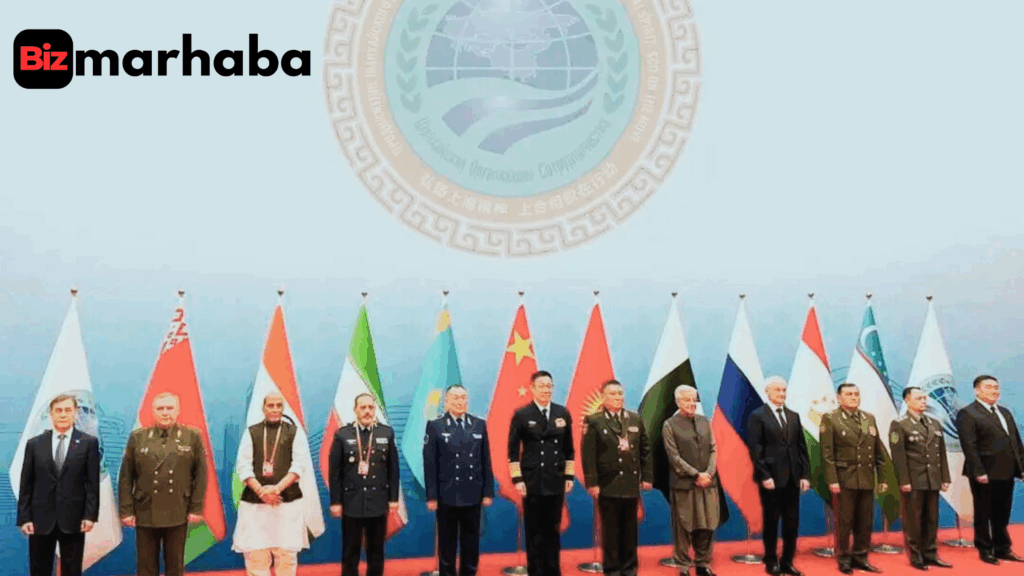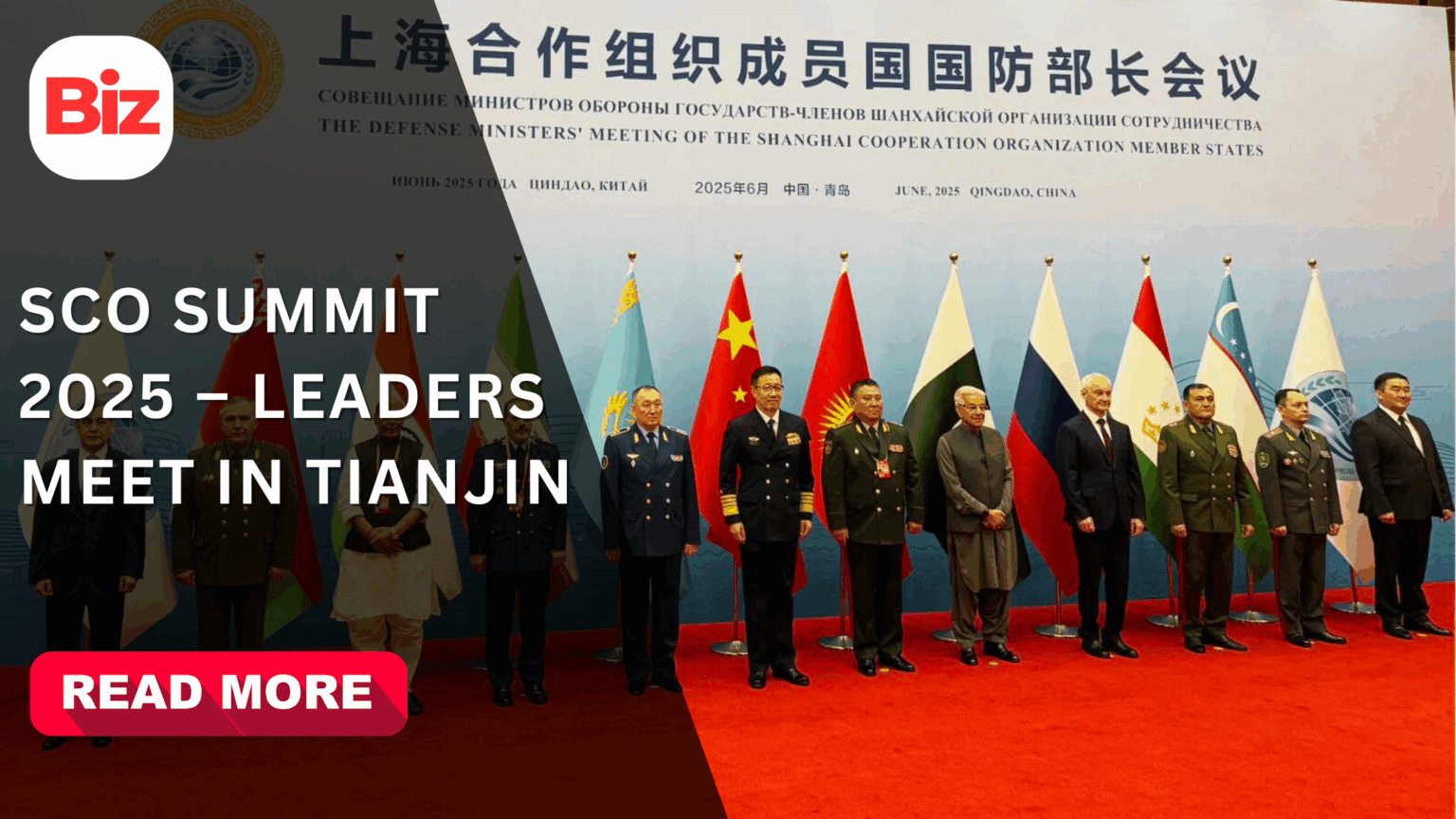SCO Summit 2025 opens in Tianjin on August 31 – September 1, 2025, with China as host and President Xi Jinping chairing leader-level sessions. Leaders from Eurasia will debate security, trade and a shifting global order. China is hosting the meeting officially and President Xi Jinping will chair the sessions and host bilateral events.
The summit, formally the Shanghai Cooperation Organization Summit 2025, brings leaders from over 20 countries and chiefs of around 10 international organisations.
Attending leaders include India’s Narendra Modi, Russia’s Vladimir Putin, Iran’s Masoud Pezeshkian and Pakistan’s Shehbaz Sharif, among others. Coverage of the SCO Summit 2025 is expected to influence discussions at other multilateral forums.
Geopolitics and the Shanghai Spirit
The gathering arrives amid heightened geopolitical strains. Washington imposed tariffs on Indian goods. Ongoing conflicts in Ukraine and the Middle East have driven members to stress multilateralism. Beijing is using the forum to advance what it calls the “Shanghai Spirit”. It seeks to position itself as a stabilising actor in a fractious international environment.
Key Issues on the Agenda
Organisers say the agenda will range from counterterrorism to trade facilitation. The SCO secretariat and China’s foreign ministry have highlighted plans to improve security mechanisms. They also aim to simplify trade procedures across member states. Delegates will also discuss connectivity, energy and cultural cooperation.
Bilateral meetings will dominate the sidelines. Modi’s visit marks his first trip to China since 2018. He arrived in Tianjin on August 30 ahead of scheduled talks with President Xi and other leaders. Russian and Turkish delegations will meet to discuss Ukraine. Iran and Russia are expected to hold talks on regional security and Tehran’s nuclear file.
Challenges Within the Bloc
The SCO was born as a security pact in the 1990s and has since broadened into trade and diplomacy. Yet members often disagree on responses to crises. India has resisted unanimous language on some conflicts, notably the Israel-Gaza crisis and Russia’s war in Ukraine. These divisions will test the summit’s capacity for consensus.
To understand the summit’s remit, some delegates briefed the press that they still ask what is SCO Summit in practical terms. For many members, the event serves as a platform for bilateral deals rather than sweeping policy shifts. For Central Asian countries, security and economic ties to major powers remain priorities.
Economic and Security Cooperation

The SCO Summit countries account for a significant share of the global population and resources. Members span China, India, Russia, Pakistan, Iran, Kazakhstan, Kyrgyzstan, Tajikistan, Uzbekistan and Belarus. The group also hosts a wide circle of observers and dialogue partners. This diversity complicates, and sometimes empowers, collective action.
Economic cooperation will be central. The SCO Secretariat circulated draft text on trade facilitation and called for streamlined customs procedures. Beijing has pushed investment and connectivity projects as part of its chairmanship. Delegates hope to sign documents that ease cross-border trade and boost regional supply chains.
Security will remain prominent. Since its founding, the SCO has prioritised counterterrorism and joint security exercises. Delegates will review measures to counter transnational threats and discuss intelligence sharing. The Chinese chair has urged tangible steps to strengthen the SCO’s security mechanisms.
Diplomatic Significance of SCO Summit 2025
The summit’s optics matter. Two days after the meeting, Beijing will host a large commemorative military parade on September 3, 2025. The event will mark the 80th anniversary of the victory of the Chinese People’s War of Resistance Against Japanese Aggression and the World Anti-Fascist War. Several leaders attending the summit are expected to remain for the parade. Their attendance reinforces diplomatic theatre around China’s year of major events.
Not all expect headline-grabbing outcomes. Experts suggest the summit will deliver incremental steps on trade and cooperation rather than radical realignments. Still, the presence of major actors offers opportunities for bilateral breakthroughs, especially between India and China.
Diplomats from member states emphasise the Shanghai Cooperation Organization Summit 2025 theme of “Upholding the Shanghai Spirit.” Officials say the focus is on mutual trust, equality and practical cooperation. The Chinese foreign ministry frames the meeting as both a milestone and a working session.
Journalists on site report tight security and high-level logistics. The SCO Secretariat coordinated with local authorities to prepare meeting venues and bilateral rooms. Delegates arrive after a series of foreign ministers and security meetings that prepared the final agenda.
Expectations, Cooperation, and Coordination
For readers asking what is SCO Summit, it remains a flexible, consensus-driven bloc. It does not mirror Western security alliances. Instead, it blends security cooperation, economic outreach and diplomatic engagement. That mixture makes it both resilient and unwieldy.
Media attention is fixed on Eurasian balancing. China hopes to portray unity and constructive leadership. Russia seeks political backing and economic ties. India aims to protect its strategic autonomy while pursuing trade gains. Smaller members look for development projects and security guarantees. The result will reflect the limits of consensus.
Security analysts will watch whether leaders produce a joint communique or only narrowly tailored agreements. The SCO Secretariat has circulated draft communiques and documents for leader-level consideration. Regardless of formal deliverables, the summit will shape diplomatic lines ahead of other global gatherings.
Security, Trade, and Practical Outcomes
The SCO Summit countries are likely to continue incremental integration. Observers expect committees and working groups to pursue practical outcomes after leaders depart. The SCO Secretariat said it prepared a package of documents for approval, covering security, trade and institutional reform.
Governments will measure success differently. Beijing hopes to showcase a capable chairmanship. New Delhi will judge progress on practical cooperation and stable ties. Moscow will seek diplomatic leverage. Smaller capitals will look for investment and security guarantees. The summit will reveal where those interests align.
On the margins, international organisations and dialogue partners will press for cooperation on climate, health and transport. Their participation underlines the summit’s wider diplomatic reach. The SCO Secretariat has engaged with partner organisations to coordinate joint activities.
Regional and Global Implications
As delegates convene, the central question returns to what the SCO Summit represents in the changing world. Is it a vehicle for regional governance or a stage for big-power diplomacy? With the summit in full swing, Tianjin’s outcomes are beginning to offer answers. Discussions are unfolding on critical issues such as security, trade, and a shifting global order.
Looking Ahead
SCO Summit 2025 will close as diplomats weigh incremental text and bilateral deals. Whatever the formal statements, the meeting will shape Eurasian ties and signal how regional powers manage competing priorities. Observers will parse both the communiques and the private talks.
The Shanghai Cooperation Organization Summit 2025 leaves a clear imprint. The grouping remains central to regional diplomacy and a stage for balancing ambitions. Its future will depend on whether member states convert summit optics into concrete policy.








